I often have some kind of music session on or near my birthday, but this year a few people were a bit under the weather just before a planned mix. So instead for a special treat to myself on my 58th, below is a recently taped session with one of my all time favorite musicians, good friends, and fellow groove master - Jerome Dawson….
Deep Dive Summary (ala NotebookLM)
Summary
In this segment, Steve and Jerome discuss Jerome's career path, highlighting his varied journey from studying aeronautics and pursuing a career in aviation to later becoming a police officer and ultimately returning to music. Jerome shares how his original dream of flying military aircraft was impacted by competition and practical challenges, leading him to eventually join the San Jose Police Department with hopes of piloting for their force. After some time as a detective, he began seeking a better work-life balance and warmer coastal lifestyle, moving his family down to Southern California and reviving his band, Wazabe Blue.
Tragedy struck with the passing of Jerome’s son, prompting a move to Hawaii, where he found solace and healing in the warm, nurturing environment. There, he resumed his music career but in a new form, performing solo across local venues. Music became not just a career but a form of emotional release, allowing him to connect with others and process his experiences. Jerome’s story underscores how life’s shifts and hardships often lead to self-reinvention and new avenues of expression.
Summary
In this segment, Steve and Jerome further explore the impact of Jerome’s early life and how it influenced his relationship with music. Jerome shares the loss of both parents at a young age and how his mother’s encouragement led him to the saxophone, though he initially resisted it, even kicking the case on his way home as a child. After her passing, music became a way for Jerome to honor her memory, especially through playing her favorite artists like Marvin Gaye and Al Green.
They discuss how music became a healing outlet for Jerome, allowing him to process emotions gradually over the years, similar to releasing small "earthquakes" of emotion rather than an overwhelming outpour. Jerome also mentions how he keeps sunglasses on during performances as a shield for emotional moments that might come unexpectedly. Steve connects this with his own experience, explaining how he has mentally locked away past trauma as a driving force. The two agree that the therapeutic power of music and self-expression can bring deep, unexpected emotional release—especially when life provides small, impactful moments that trigger reflection. They conclude with reflections on how Jerome’s move to Hawaii has been instrumental in his ongoing journey of healing.
Summary
In this segment, Jerome reflects on his transition from exclusively playing in bands to performing solo after moving to Hawaii. Originally resistant to solo performances, he preferred the energy and collaboration of a band. However, local demand and the challenges of starting a new band led him to experiment with backing tracks. He soon found success and ease in solo gigs, performing regularly across the island without the complexities of managing a full band.
Jerome describes how his approach to music evolved in this solo setting. While he misses the dynamic, collective energy of a band, he compensates by continually learning new songs to keep his sets fresh. His use of backing tracks allows him perfect timing, while he focuses on creating his "voice" through the saxophone, a method he likens to singing. Steve, a drummer, shares his view on the importance of “staying in the pocket” and the value of space in music, emphasizing how silence can enhance musical expression. Both discuss how a strong foundation in rhythm, often set by bass and drums, gives other musicians freedom to experiment and improvise. Jerome agrees, reflecting on the significance of silence and space in creating impactful musical moments.
Summary
In this conversation, Steve and Jerome share thoughts on aligning passions with work and finding the right balance between practical and joyful pursuits. Jerome also recounts how living in Hawaii has helped him appreciate simpler, solo performances, though he misses the camaraderie of his San Diego bands. The duo discuss the joy and energy that comes from playing with other talented musicians, emphasizing how live, collaborative settings elevate their performances. Jerome speaks to the challenge of recreating that same energy solo, even as his repertoire expands through regular gigs.
Jerome is known for his thorough, sometimes “analysis paralysis” approach, especially in researching health hacks and music equipment, though he’s recently sped up his decision-making. He's embraced infrared and whole-body vibration therapy, a favorite of Steve's, and reflects on how these practices contribute to well-being.
They also discuss Steve’s music studio, a valuable resource in Oceanside where musicians could gather, play, and record. Steve highlights the importance of pursuing a career aligned with one’s passions, advising others to let personal interests guide their professional lives. Jerome agrees, noting that doing what you love is essential to feeling fulfilled and making work feel effortless.
Summary
Steve shares with Jerome how, in the realm of AI, content is king for training models and encourages Jerome to consider licensing his music as content for future AI applications, which could be monetized passively. Jerome, while open to the idea, explains that his main focus and passion lie in live performances. He thrives on the energy and spontaneity of performing for an audience, finding it challenging to capture that same dynamic in a recording studio. Jerome enjoys the immediate connection with listeners and the energizing atmosphere of live shows, which he feels truly bring out his best music.
Steve then suggests that recording these live experiences—capturing not just the music but the audience's reactions and overall impact—could provide valuable data for AI models focused on human experiences. By associating music with mood or well-being, such as improved sleep or happiness after a concert, Jerome’s performances could potentially create new layers of content that AI could analyze and learn from. Jerome agrees that music indeed has a unique power to uplift, affirming its role in enhancing happiness.
Present day studio equipment: Battlestation (mixing, recording, drums), Backline/PA, and Soundsystem Rig:
For a music clip, in the spirit of this discussion, I dug back into the archives and pulled a raw sample from a Captain Kirk and the Doctors of Groove “rehearsal” (circa April 2018). We never thought of the sessions as rehearsals. We were playing together - typically weekly, on a Monday - without thinking about gigging. Instead, we gathered just for the pure joy of making music together. This was before I put in place the observation room, so we would just circle-up and play for ourselves. I wasn’t doing video then, but the audio is below. Kirk (vocals/guitar), Jerome (sax), Johnny Conga (and other toys), Blaze (bass), and me. This one was a Kirk original - “Peace (first part).” One of the first run throughs (including a couple false starts, initial sour notes, etc.!) - this group became so tight that even stabs and changes could be anticipated with Kirk directing and playing throughout. Peace was Kirk’s baby, so if it wasn’t true to his vision, he would stop us and start again…” It’s gotta be clean or don’t do it” Man I miss that group…





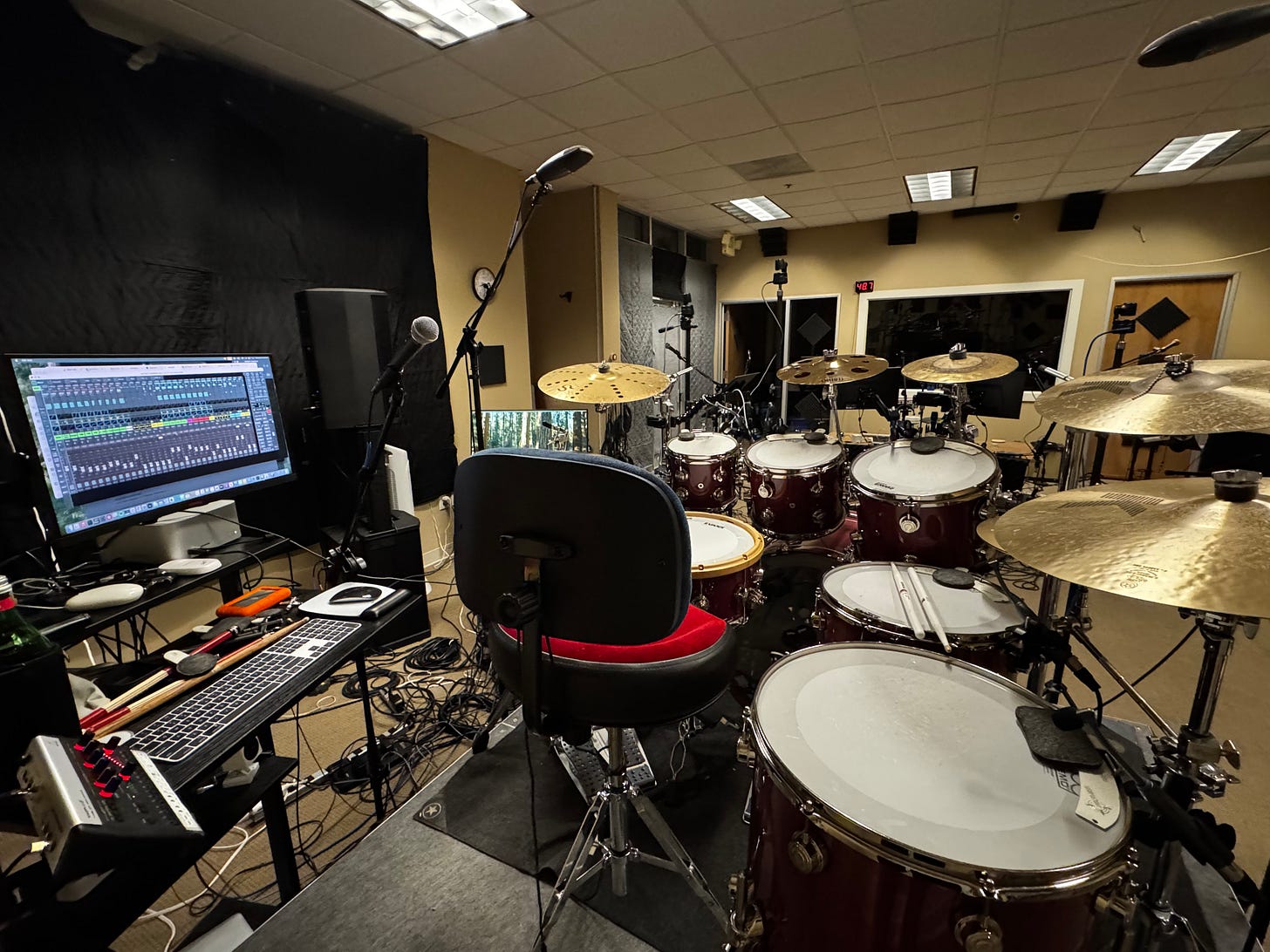
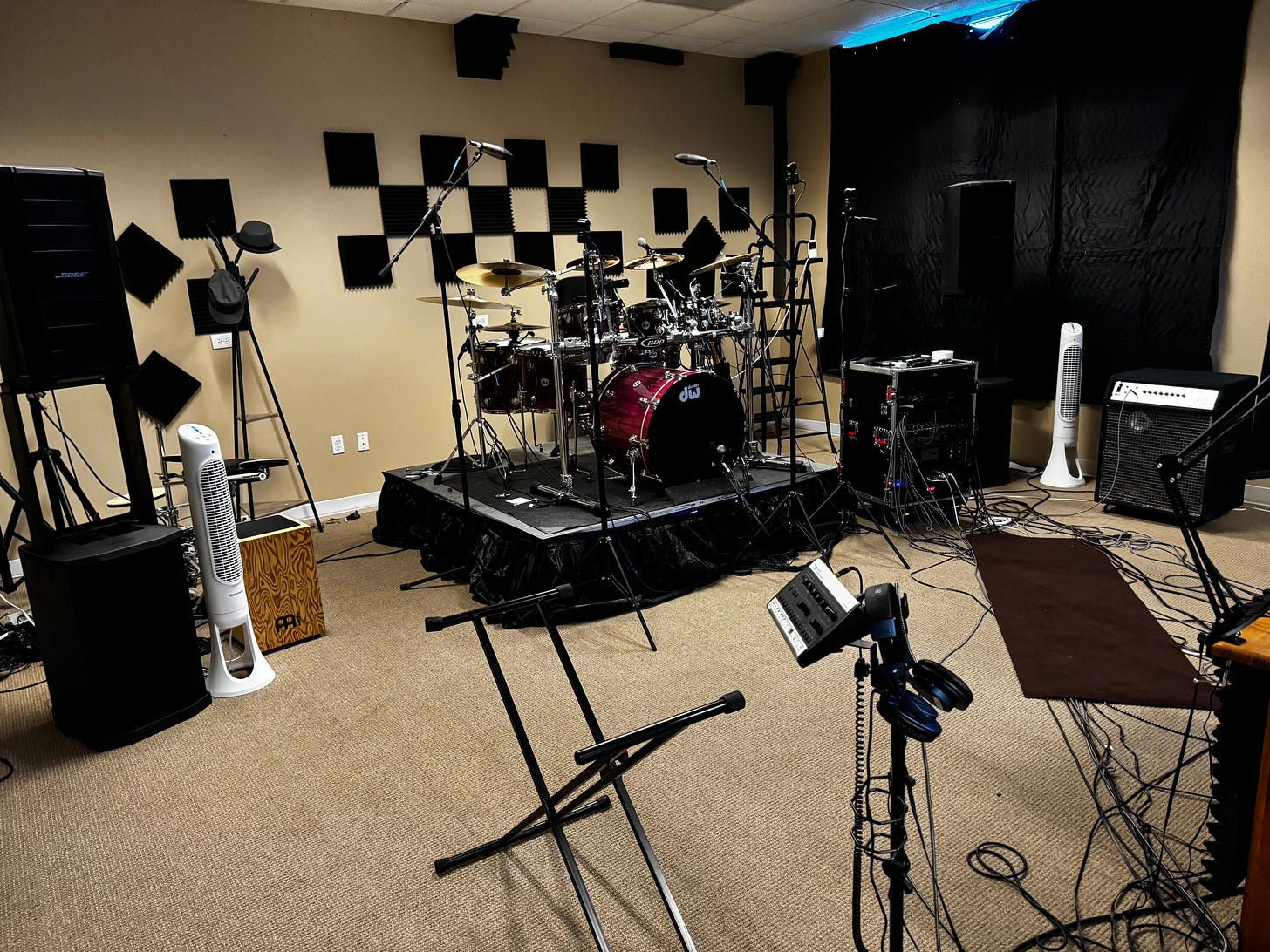



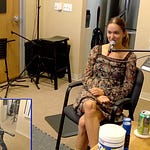

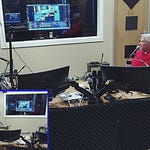

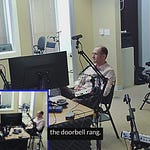


Share this post